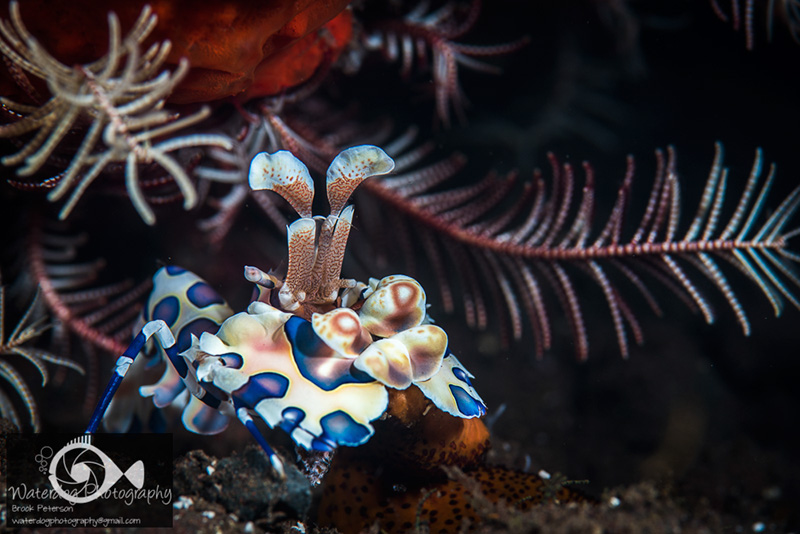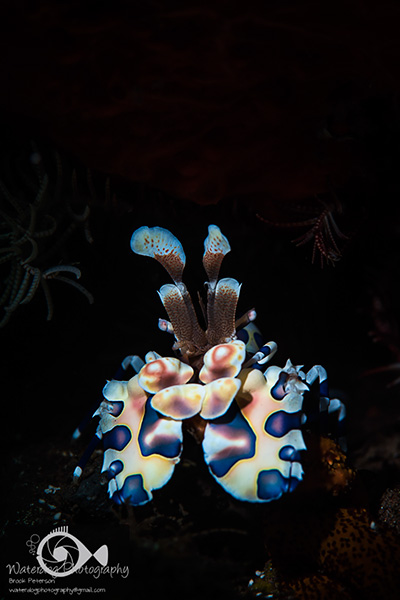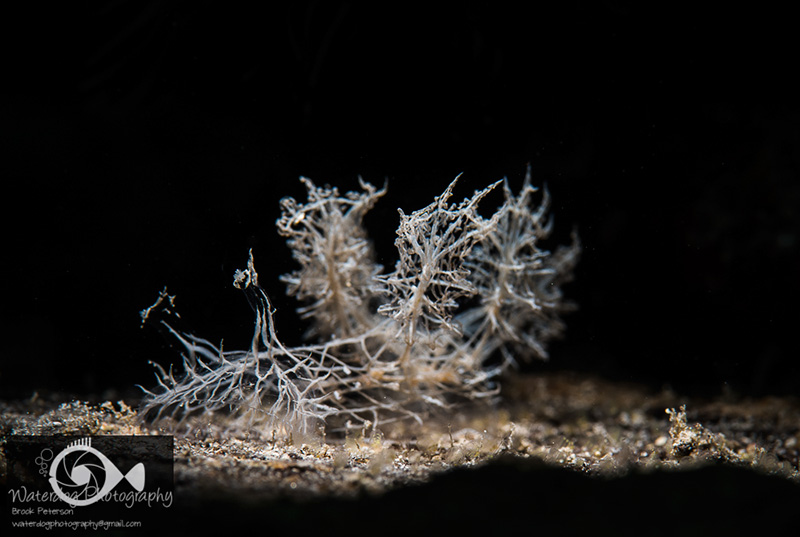Acting Snooty!
Snoot photography can be a fun and rewarding way to up your game in underwater photography. Besides being a quirky word, a snoot is a tool photographers use to manipulate light. Underwater, it is most often used in macro photography, but can be a valuable tool for wide angle shooting, especially in less than stellar conditions. Take a look at the following images to get an idea of what a snoot can do. The image below was taken using two strobes to light the subject. Although the image is not a bad one, it is a little bit busy and can be made much better.

This image is of the same Harlequin Shrimp just moments later, using a snoot with the light coming from directly overhead.

You can see how the light illuminates the subject without lighting the surrounding environment. This has the effect of isolating the subject so that it stands out. This can be especially valuable when you have a very busy background, or the animal is in a place where it is hard to visually separate it from its environment. There are several different types of snoots, and each one works differently, although they all give similar results.
The Retra LSD Ultimate Light Shaping Device focuses the light from your strobe down to a point that can be shaped like a spotlight on a small object. This will block the light from reaching the surrounding area, isolating the subject. It has templates that you can use to customize the shape of the light (such as a square, or different sized circles.) With the focus light on your strobe turned on, it is easy to focus on the subject, as the light coming down through the snoot will illuminate the area that will be lit. The closer the snoot is to your subject, the more pronounced the circle of light will be. This Melibe nudibranch, for example, has the snoot very close to it giving the light a hard edge.

Another type of snoot is made by Reefnet and uses fiber optic technology to direct the light to your subject. This snoot works by sending the light from your strobes through a bundle of fiber optic cables toward your subject. The advantage of a fiber optic snoot is that you have the ability to articulate the light in any direction you want. You can move the bendable arm so that the light is coming from any direction. It is also a bit more compact than the Retra, although the quality of the light is not as rich.
The following image of a Doto greenmayeri nudibranch was taken using two snoots; the Reefnet Fiber Optic Snoot with the light coming from underneath the nudibranch, as well as the Retra LSD with the light coming from above.

Lighting the nudibranch this way required an assistant to help hold the snoots, and the effect is that the nudibranch looks as though it is lit from the inside, without lighting up much of its surrounding environment.
There are many other snoots on the market such as the 10 BAR snoot. This one takes the light from your strobe and directs it through graduated tubes to make it smaller. It is also possible to make a homemade snoot this way using graduated PVC. The principle is the same: the light from your strobe is made a smaller diameter so that just your subject is lit.
Another advantage of using a snoot is that you can backlight your subject. Sometimes you have an animal that has an interesting shape, but that shape can be lost using strobes. Take this Rhinopias frondosa, for example. It has a lot of detail that can easily get lost against its environment. I was lighting it with one strobe (from the right) so that the animal's own shadow would help isolate it from its background. It worked, somewhat, but the image has a lot of distractions.

This Rhinopias was lit using just a snoot from behind and slightly face on. It is a much more dramatic and interesting image.

Some animals are more translucent than others, and lend themselves better to front lighting or backlighting. This Ceryece elegans nudibranch was shot using a snoot both from the front and from behind. When the light comes from different directions, the animal has a completely different look.


RECOMMENDED ARTICLES
SUPPORT THE UNDERWATER PHOTOGRAPHY GUIDE:
The Best Service & Prices on u/w Photo Gear
 Visit Bluewater Photo & Video for all your underwater photography and video gear. Click, or call the team at (310) 633-5052 for expert advice!
Visit Bluewater Photo & Video for all your underwater photography and video gear. Click, or call the team at (310) 633-5052 for expert advice!
The Best Pricing, Service & Expert Advice to Book your Dive Trips
 Bluewater Travel is your full-service scuba travel agency. Let our expert advisers plan and book your next dive vacation. Run by divers, for divers.
Bluewater Travel is your full-service scuba travel agency. Let our expert advisers plan and book your next dive vacation. Run by divers, for divers.



































